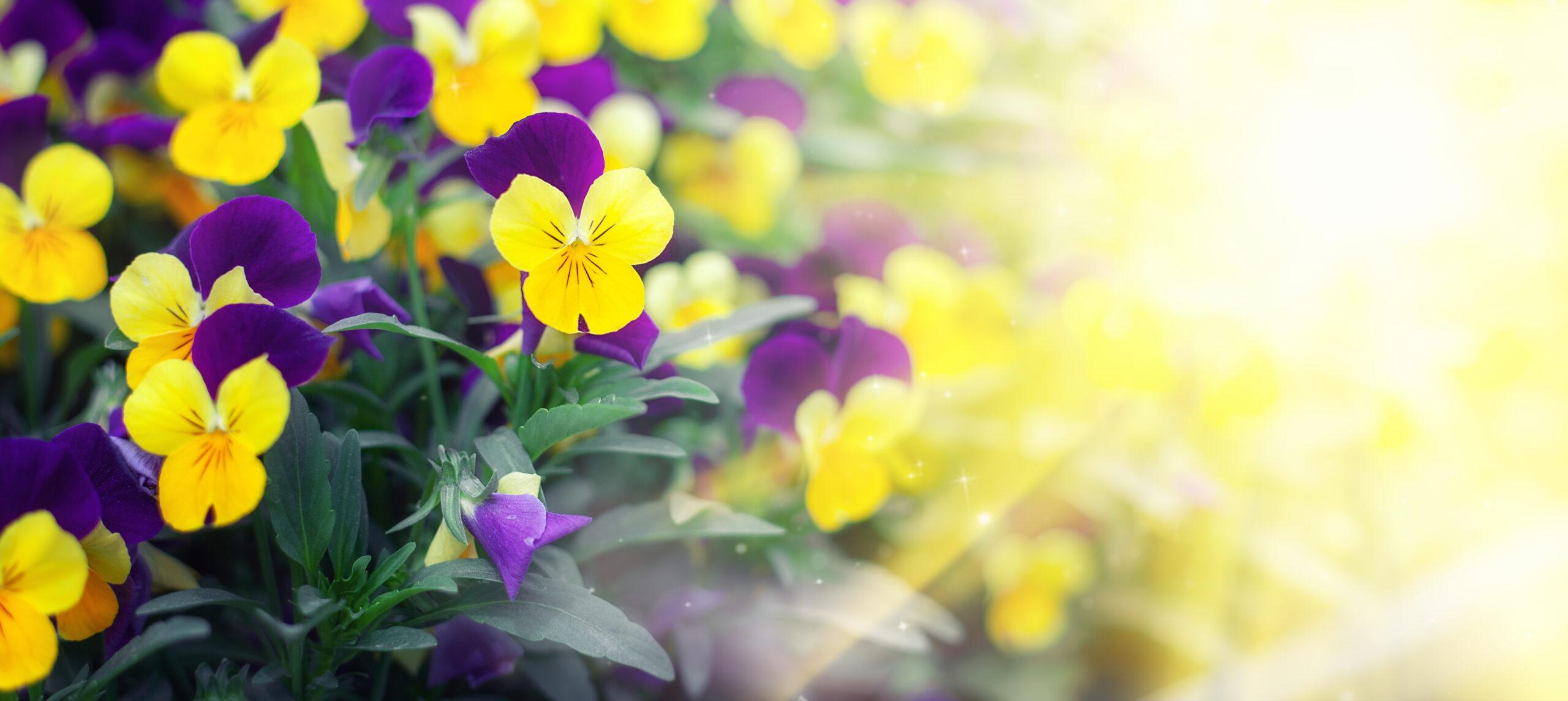For those of us who love flowers, I think it’s hard to look at bright-faced pansies and not smile. Maybe that’s because these cheerful blossoms already appear to be smiling at us! But the happy faces are just part of the reason these cool-weather plants so richly deserve to be in our late-season gardens.
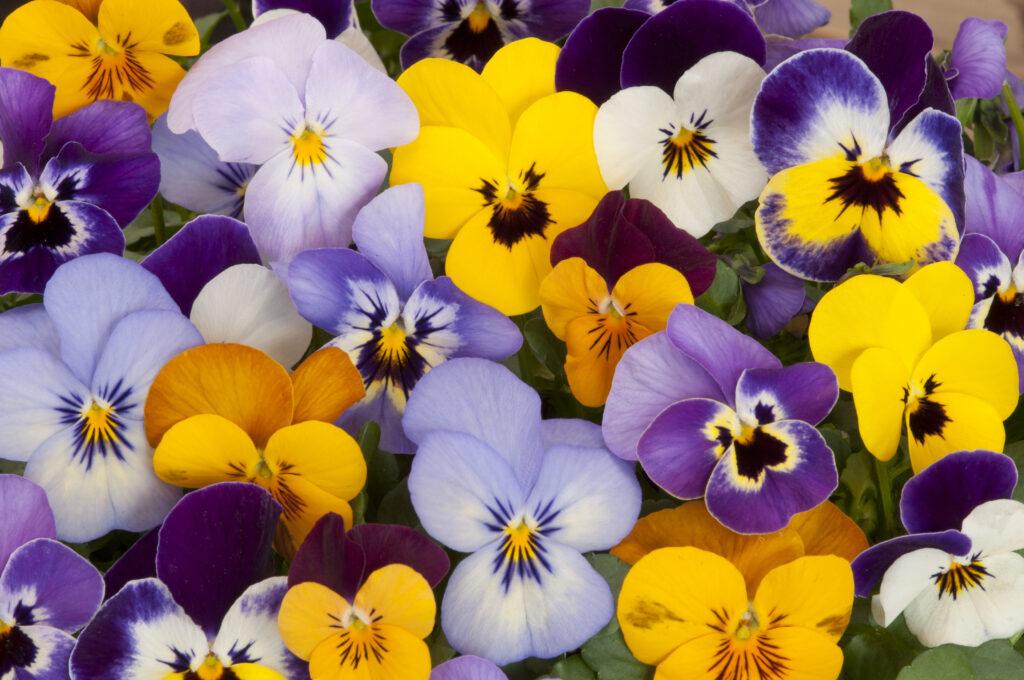
Autumn may be my favorite season
I love the warmth of the rich golds and reds and russets that mark the arrival of fall. These earth tones make a perfect backdrop for a bold and unapologetic burst of color that a basket or bed of pansies can create.
Planting pansies and violas this time of year can be especially rewarding for gardeners who want to choose some of their favorite varieties and create their own container arrangements, much as they do in spring with flowering annuals. Why not grab a quirky repurposed container or flower pot and fill it with these sweet blossoms, letting them tumble over and spill out? Lovely! Creating these playful displays is an easy and productive way to indulge in one last round of planting before Mother Nature forces us to take a break and make way for winter.
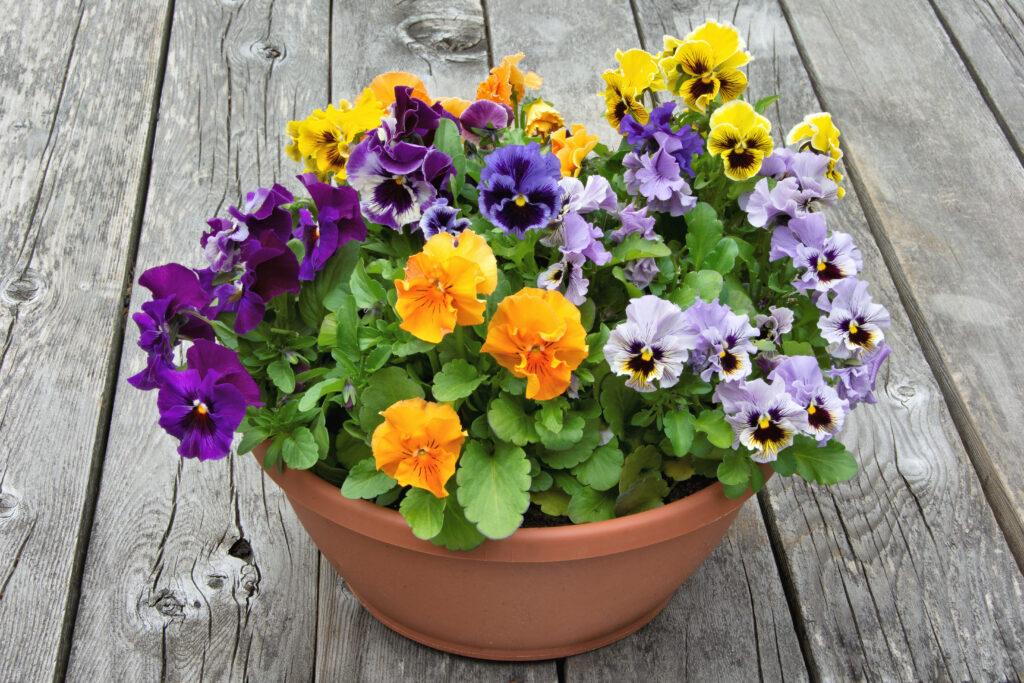
A bit of trivia
Violas have a long history and date back much farther than the pansies we know today. While violas go back more than 2000 years, it wasn’t until the early 1800s that an English nobleman began crossing different varieties of violas to create the larger two and three-colored pansies that brighten our modern gardens. It didn’t take long until much of Europe was enthusiastically planting pansies in their gardens... a trend that spread to the US soon thereafter.
Pansies and violas aren’t just pretty
These cheerful flowers are tougher than they look. Their ability to stand up to cold weather only adds to their popularity at a time when the summer flowers are making their exit.
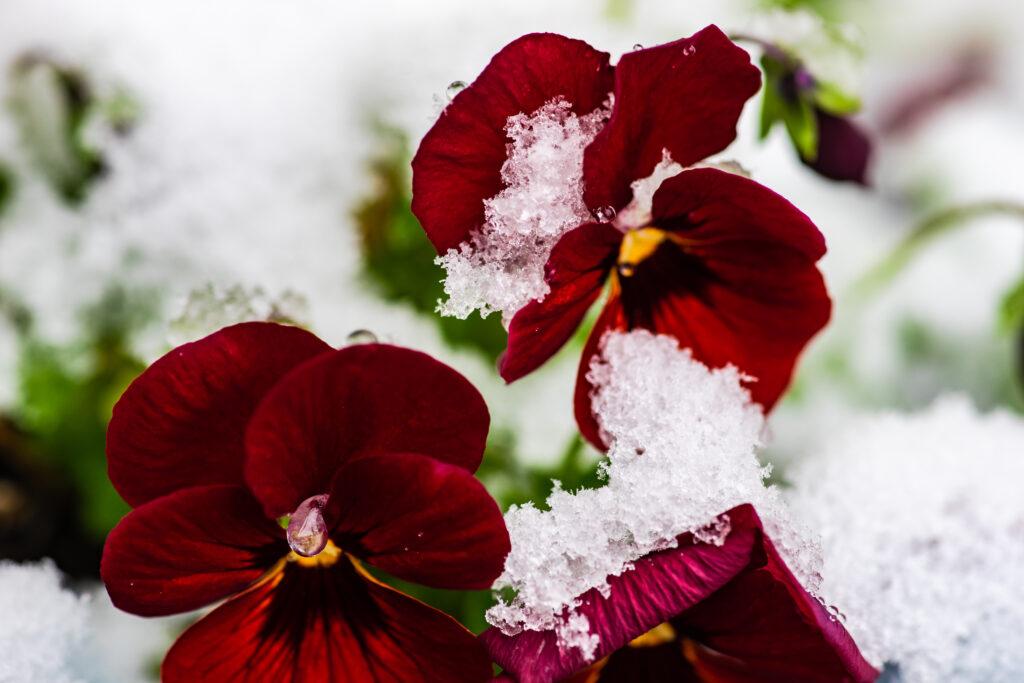
Pansies and violas are generally considered annuals, specifically “winter annuals,” sometimes popping out flowers in the middle of winter or very early spring. They can often take temperatures down to around 20° or less if they have a blanket of snow for insulation.
Pansies planted directly in the ground have a better chance of surviving the coldest of our winter temps, especially if they’re protected with a bit of cover after their initial round of blossoms has stopped. Lightweight materials like pine boughs or medium-sized bark chips will provide a little TLC for the crowns of the plants without packing down. Remember to check them now and again to see if the pansies and violas are putting out flowers so you don’t miss a mid-winter show!
Keith Funk, one of the Wise Guys on the Garden Wise radio show (which Tagawa sponsors) recommends planting pansies over spring-flowering bulbs as a reminder of where the bulbs are when they’re not in bloom. Watering the pansies during winter dry spells will mean you’re watering your bulbs, too. Win-win!
Lighting up your late-season garden is easy with pansies!
These undemanding, happy-faced flowers don’t ask for much. Give them rich, very well-drained soil and bright sun. Full winter sun is perfect, ‘though in late spring and summer, morning sun only is best since the flowering usually shuts down in hot weather.
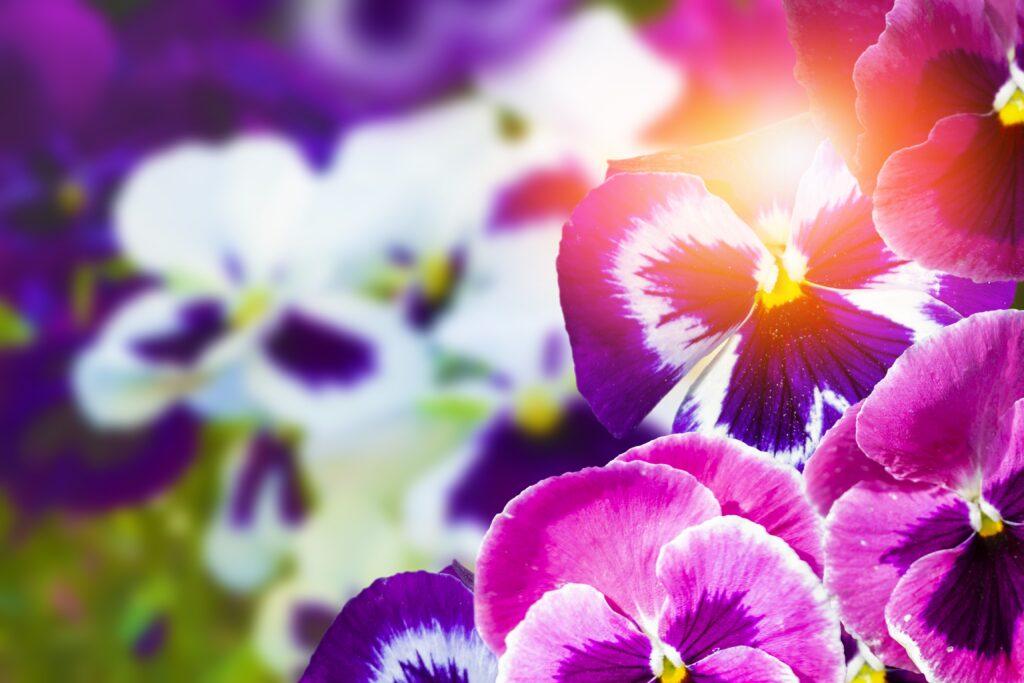
A little bit of time-released fertilizer at planting time is helpful. While they continue to bloom, be sure to cut off the fading flowers to encourage more blooms and keep the plants tidy.
If you smile at pansies that smile back at you, your pansy fix awaits at Tagawa Gardens!
